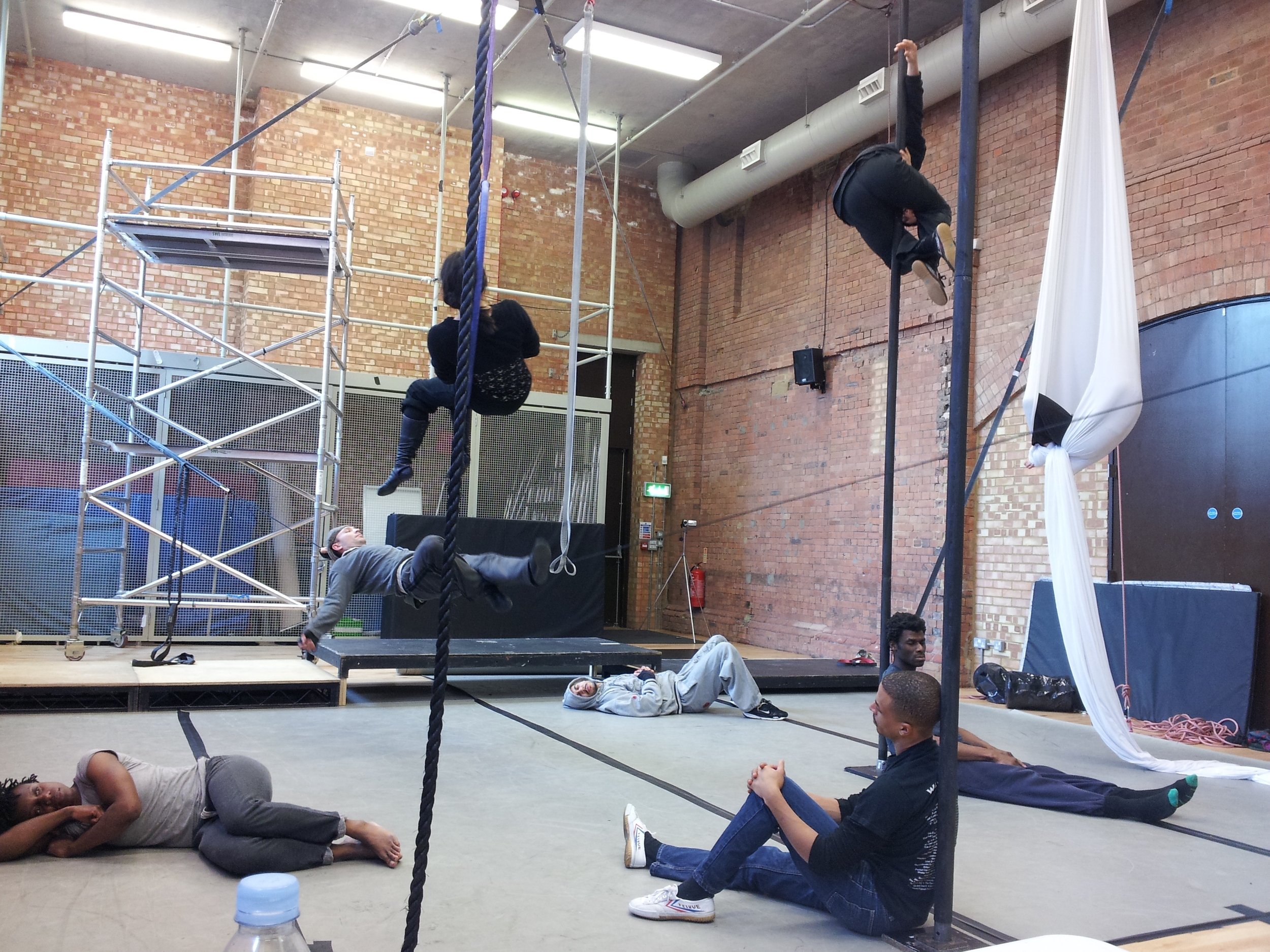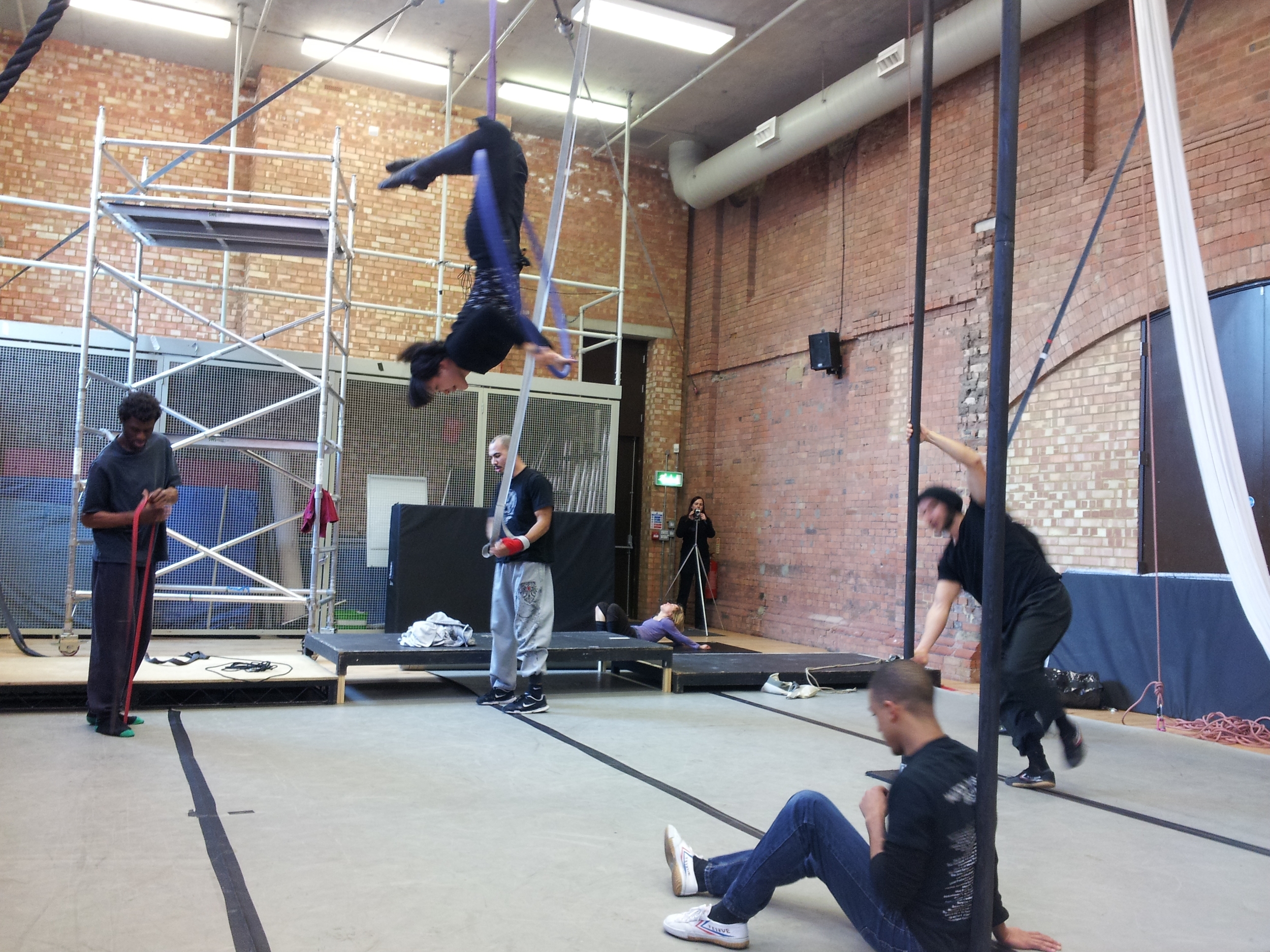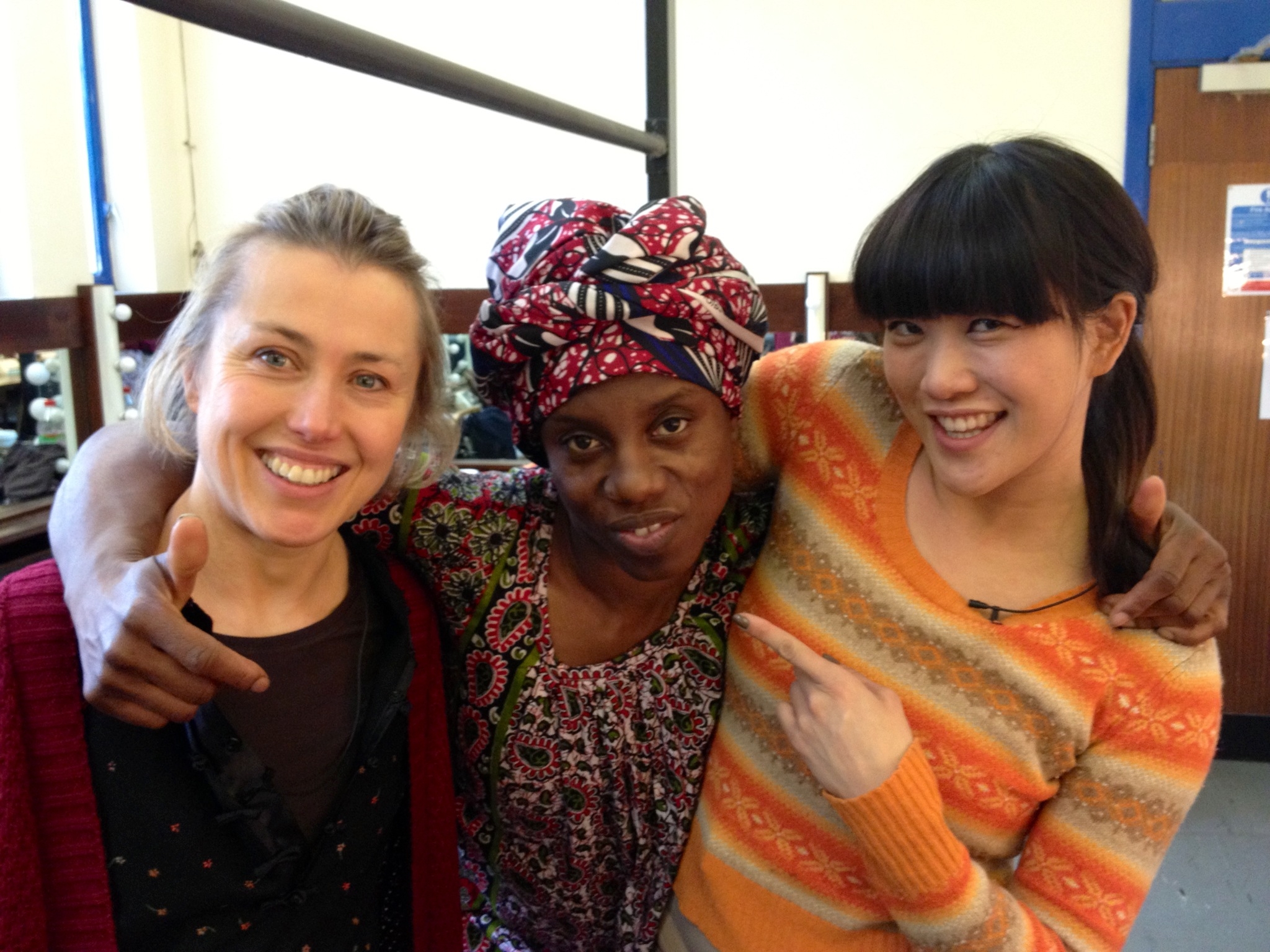 Week One – The first day of rehearsals, I arrived to Circus Space overwhelmed by the huge welcoming committee already there. They were to introduce the new cast consisting of 1 actor and 7 circus performers for ‘The Arrival’ production directed by Kristine Landon-Smith from Tamasha Theatre Company in collaboration with Circus Space.
Week One – The first day of rehearsals, I arrived to Circus Space overwhelmed by the huge welcoming committee already there. They were to introduce the new cast consisting of 1 actor and 7 circus performers for ‘The Arrival’ production directed by Kristine Landon-Smith from Tamasha Theatre Company in collaboration with Circus Space.
The cast – Actor Charlie Folorunsho, with Circus Performers – Antonio Harris, Gisele Edwards, Nektarios Papadopoulos, Antoinette Akodulu, Addis Williams, Sam Hague and myself.
We were lined up in the training space which would be similarly spaced out to the actual construction draft of the stage setting but not quite in the exact measurements. This we found out became to be difficult later on for some scenes. As we stood in front of roughly 30 people, we all introduced ourselves and what we did as a profession. Once the introductions and visual aspect of the stage setting were looked at, Kristine and Sita Brahmachari who scripted the play sat us down for a pre-rehearsal chat.
Kristine started us up on some improv work and positioned us to work on the major scenes we knew would be the most physically exerting. With some outsourced help, she had Freddie Opoku-Addaie to be our choreographer.
Freddie worked us hard. I admired his determination and ability to focus with such precision as he remembered each cast member’s sequence and set rhythms he had given us for certain scenes. He worked us till we remembered each sequence in our sleep. I vaguely recall at the time how hard it all was and how I would ever be able to remember the new counts he’d throw out at us, I’d become frustrated because I thought I wouldn’t remember. Now I thank him for drilling it into us as it’s been quite smooth sailing during show time.
Week Two – The second week was somewhat a blur and very similar to week one. Though we didn’t have to rehearse 6 days a week and on a Saturday. We went over everything we had begun to learn in week one and kept fine tuning little bits which were out of sync.
Week Three – The last week of rehearsals we were no longer at Circus Space. We were at The Hangar. A hard to get to place via public transport. It is an amazing training space although it is incredibly cold. Our beautiful stage designed by Adam Wiltshire was set up there. We adjusted some of our moves to the new set and by the end of the week managed to do complete runs of the show.
On Tour – Southampton was our first stop, we were to perform at The Nuffield Theatre within Southampton University’s Campus. The cast met the rest of the production team on Tuesday just after lunch to do lighting, audio visual, sound techs and how fast we could costume change including swapping microphones. We did this all of Wednesday morning into the late afternoon and did our first proper dress run Wednesday evening. Thursday we did a dress run in the morning, another dress run after lunch and had our first live performance with Q&A immediately after. Boy what a buzz that day was. Friday we only had an evening performance. The entire cast had gotten so used to seeing each other everyday rehearsing, it mind-boggled us to have the time off, we decided to meet for lunch before we did the Friday evening performance which was lovely, I have to say, I’ve grown to love each cast member and it has been nothing but delightful to see them and the production team everyday. Saturday we performed a matinee piece and an evening performance. Because Southampton was so cold, we all decided to catch a cab straight after the last show to the station and head back to London.
Next Stop – Coventry TBC…
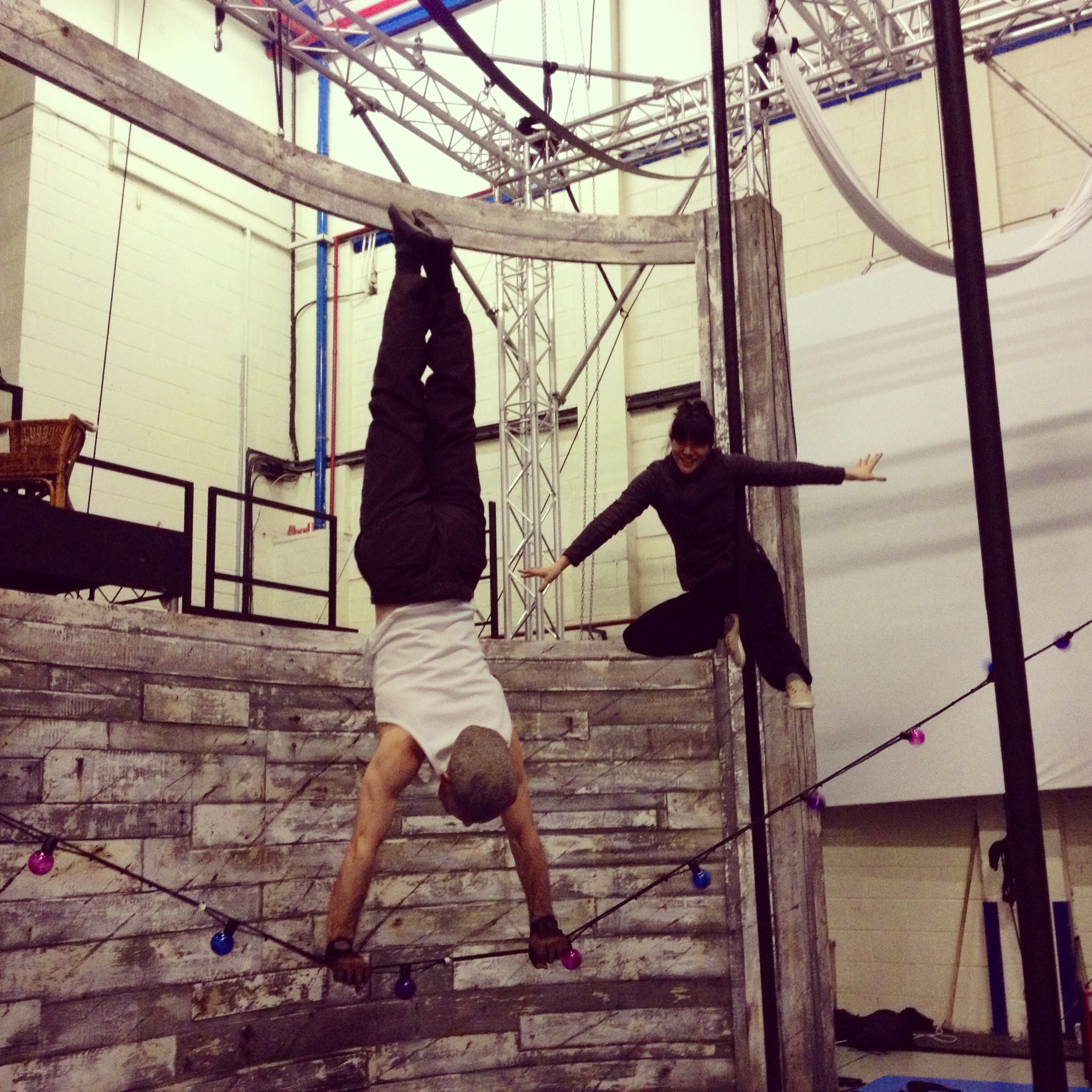
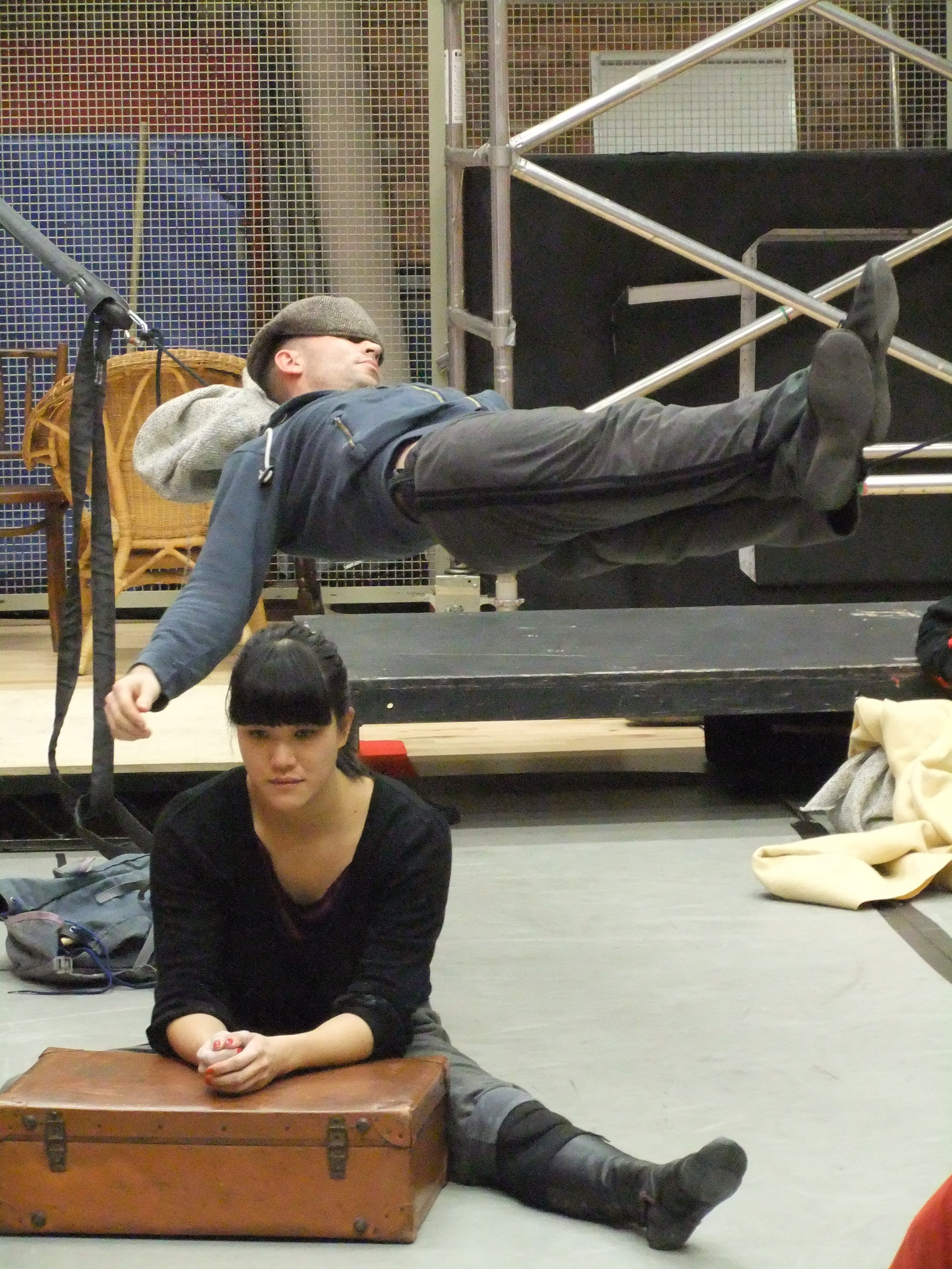 Week one.
Week one.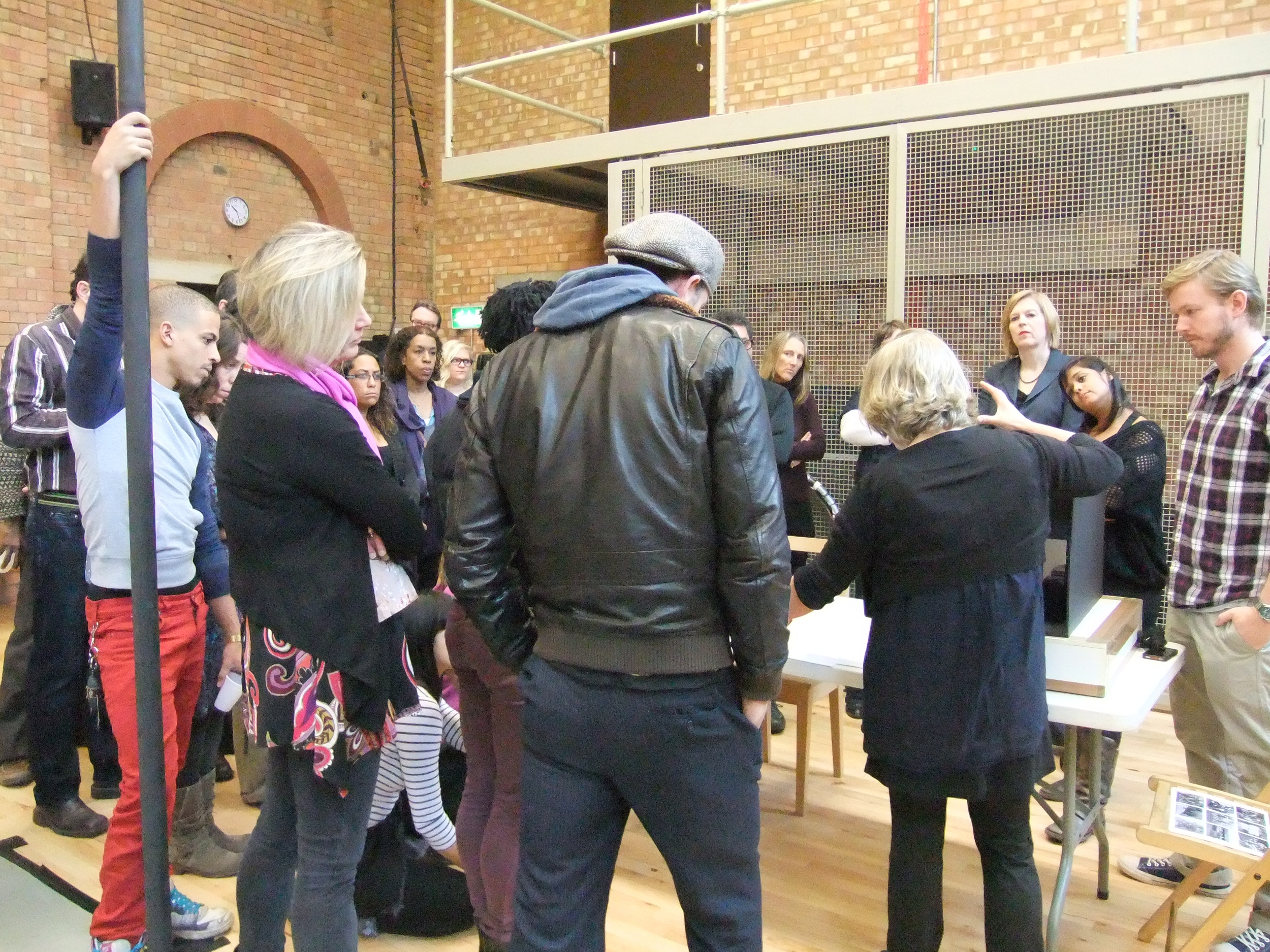
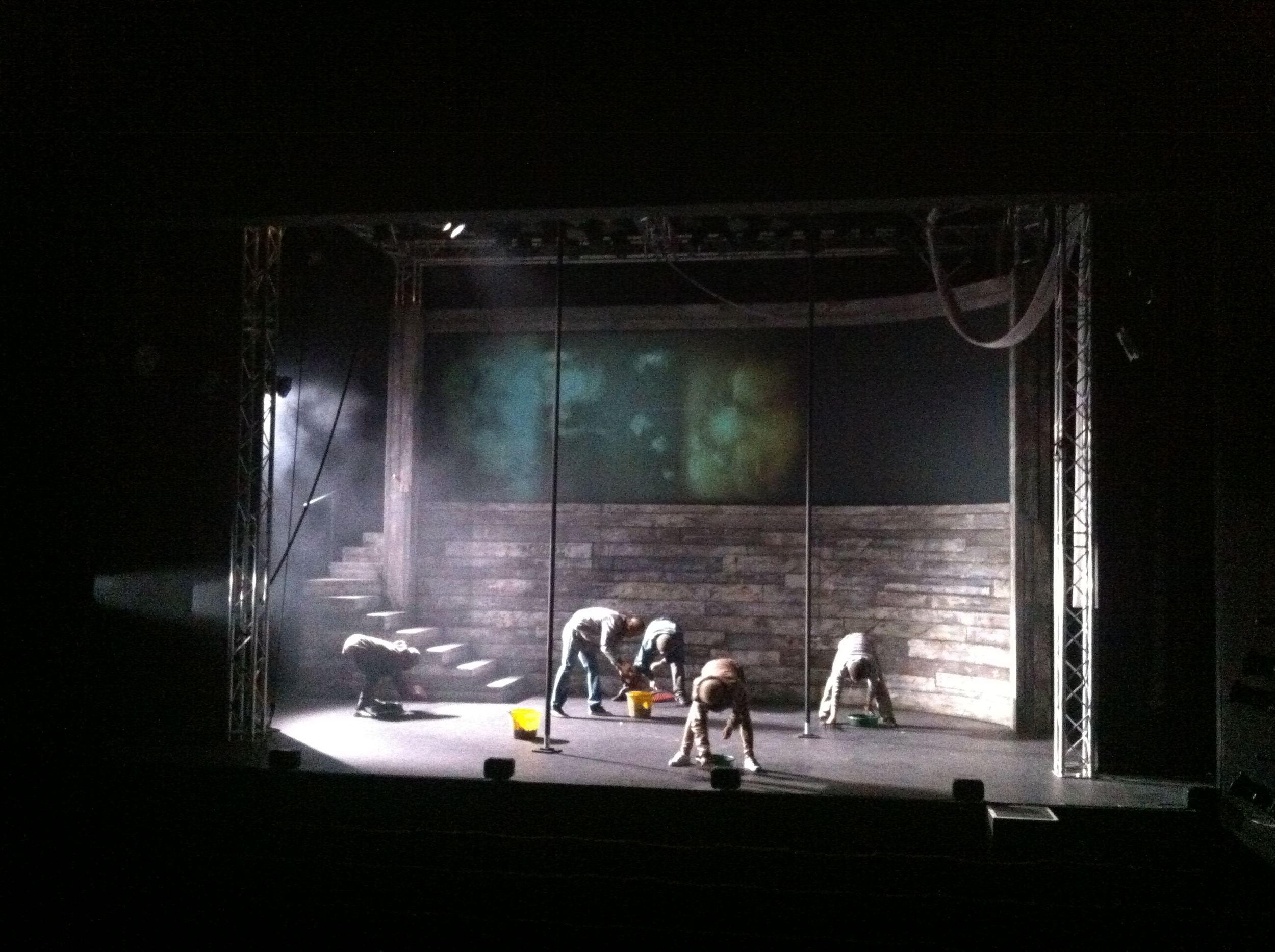 First day of fit up:
First day of fit up: